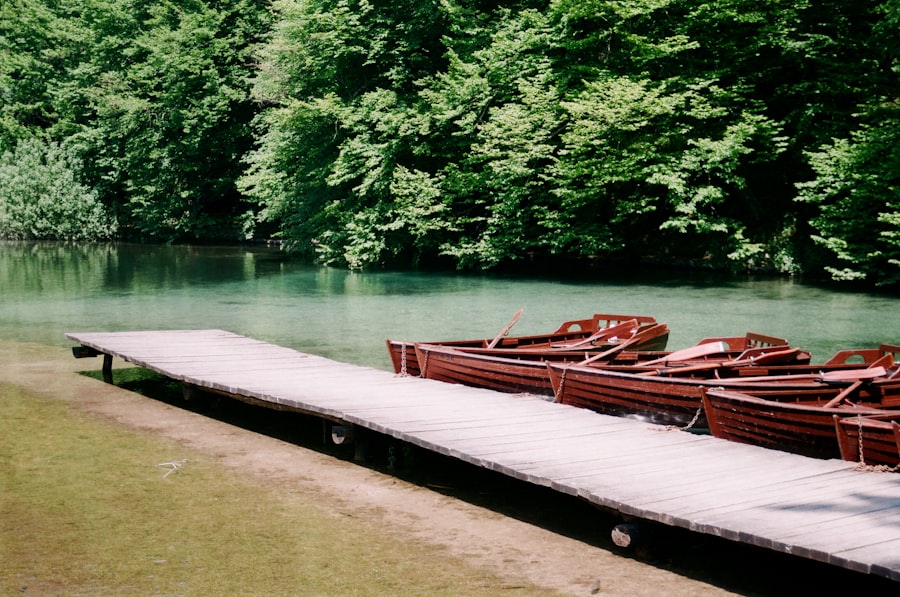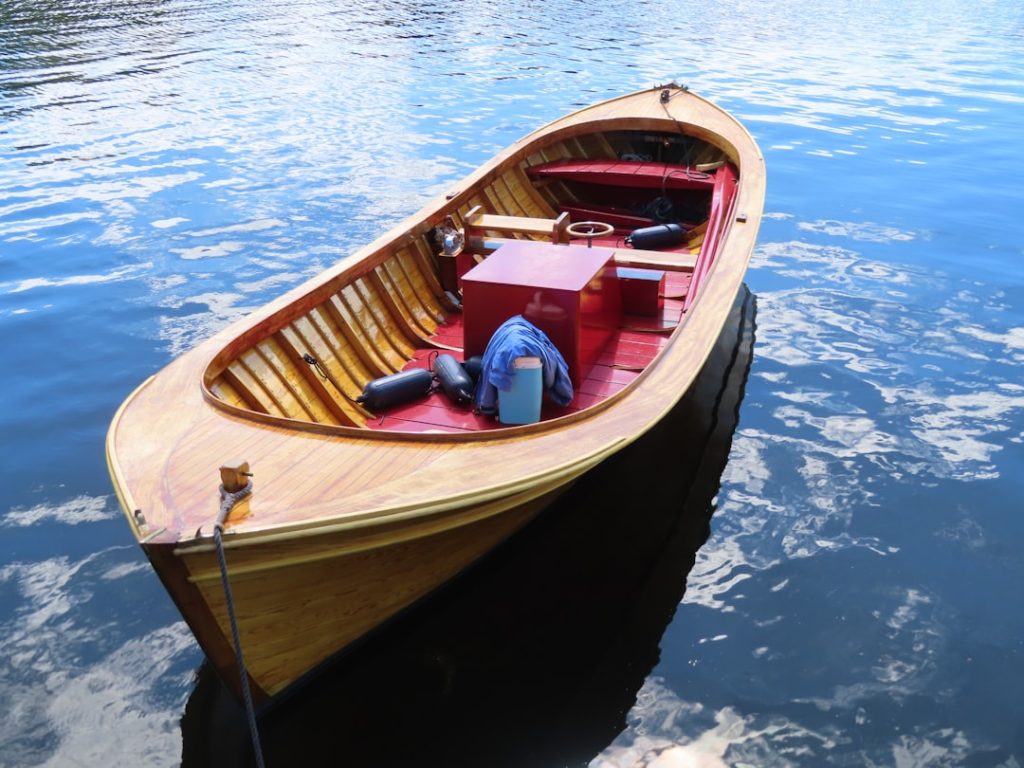Canoeing has a rich and storied history that dates back thousands of years, with its origins rooted in the indigenous cultures of North America, Africa, and the Arctic regions. The earliest canoes were crafted from natural materials such as wood, bark, and animal skins, reflecting the resources available to the communities that built them. For instance, Native American tribes utilized birch bark to create lightweight and buoyant vessels, which were essential for transportation, fishing, and trade.
These early canoes were not merely tools for navigation; they were integral to the cultural practices and survival strategies of the people who used them. As time progressed, canoeing evolved from a necessity into a recreational activity. The 19th century saw a surge in interest in outdoor activities, spurred by the Romantic movement that celebrated nature and adventure.
This period marked the introduction of more sophisticated designs and materials, including the use of canvas and aluminum. The invention of the modern canoe in the late 1800s, characterized by its sleek lines and improved stability, paved the way for recreational canoeing as we know it today. Organizations such as the American Canoe Association were established to promote the sport, leading to the development of canoeing as a competitive discipline in events like the Olympics.
Key Takeaways
- Canoeing has a rich history rooted in indigenous cultures and exploration.
- Selecting the right canoe depends on your intended use, such as recreation, touring, or whitewater.
- Essential gear includes paddles, life jackets, and safety equipment tailored to your trip.
- When buying a used canoe, inspect for damage, material quality, and overall condition.
- Canoeing offers significant physical exercise and mental relaxation benefits.
Choosing the Right Canoe for Your Needs
Selecting the right canoe is a critical step for anyone looking to engage in this rewarding activity. The first consideration should be the type of water you plan to navigate. For calm lakes and slow-moving rivers, a recreational canoe is often ideal.
These canoes are typically wider and more stable, making them suitable for beginners or families. Conversely, if you intend to tackle whitewater rapids or more challenging conditions, a whitewater canoe is designed with a shorter length and a more pronounced rocker to enhance maneuverability and responsiveness. Another important factor is the material from which the canoe is constructed.
Common materials include polyethylene, fiberglass, and Kevlar. Polyethylene canoes are durable and affordable, making them a popular choice for casual paddlers. However, they can be heavier than their fiberglass or Kevlar counterparts.
Fiberglass canoes offer a good balance between weight and durability but may require more care to avoid damage. Kevlar canoes are lightweight and strong but come at a higher price point. Ultimately, your choice should reflect your budget, intended use, and personal preferences regarding weight and handling.
Essential Gear and Equipment for Canoeing

Beyond the canoe itself, several essential pieces of gear and equipment can enhance your paddling experience. A properly fitted personal flotation device (PFD) is paramount for safety on the water. PFDs come in various styles and sizes, designed for different activities and body types.
It’s crucial to choose one that fits snugly yet comfortably, allowing for freedom of movement while ensuring buoyancy in case of an emergency. Paddles are another critical component of canoeing gear. The right paddle can significantly affect your efficiency and comfort while paddling.
Paddles vary in length, blade shape, and material. A general rule of thumb is that taller paddlers may require longer paddles, while shorter individuals may benefit from shorter ones. Additionally, consider the type of water you will be navigating; wider blades may provide more power for moving through rough waters, while narrower blades can enhance speed on calm lakes.
Tips for Buying a Used Canoe
| Tip | Details | Importance Level | Estimated Cost Impact |
|---|---|---|---|
| Inspect Hull for Damage | Check for cracks, holes, or deep scratches that may affect performance or require repairs. | High | Medium |
| Check Material Type | Identify if the canoe is made of aluminum, fiberglass, plastic, or wood to assess durability and maintenance. | Medium | Low |
| Assess Weight | Lighter canoes are easier to transport but may be less durable; consider your transport options. | Medium | Low |
| Verify Canoe Length | Longer canoes track better and hold more gear; shorter ones are more maneuverable. | Medium | Low |
| Check for Included Accessories | Look for paddles, life jackets, or carrying yokes that may add value. | Low | Low |
| Test Stability | If possible, test the canoe in water to check balance and handling. | High | Medium |
| Research Brand and Model | Some brands have better reputations for quality and resale value. | Medium | Low |
| Negotiate Price Based on Condition | Use any damage or missing accessories as leverage to lower the price. | High | High |
Purchasing a used canoe can be an excellent way to save money while still acquiring a quality vessel. However, it’s essential to approach this process with caution to ensure you’re making a sound investment. Start by inspecting the canoe thoroughly for any signs of damage or wear.
Look for cracks, dents, or soft spots in the hull that could indicate structural issues. If possible, ask the seller about the canoe’s history—how often it was used, where it was stored, and whether it has been repaired in the past. Another important consideration is the type of used canoe you are buying.
Research different models and their reputations for durability and performance. Some brands are known for their longevity and quality craftsmanship, while others may not hold up as well over time. If you’re unsure about a particular model, seek out reviews or consult with experienced paddlers who can provide insights based on their experiences.
The Best Places to Go Canoeing
Canoeing offers an opportunity to explore some of nature’s most beautiful landscapes, and there are countless locations around the world that cater to paddlers of all skill levels. In North America, places like the Boundary Waters Canoe Area Wilderness in Minnesota provide an expansive network of lakes and rivers surrounded by pristine wilderness. This area is renowned for its stunning scenery and abundant wildlife, making it a favorite among both novice and experienced canoeists.
Internationally, destinations such as the Amazon River in Brazil offer an entirely different experience. Paddling through this biodiverse region allows adventurers to encounter unique flora and fauna while navigating its winding waterways. Similarly, the lakes of Canada’s Algonquin Provincial Park present a serene environment where paddlers can immerse themselves in nature while enjoying opportunities for fishing and camping along the way.
Canoeing Safety: What You Need to Know

Safety should always be a top priority when engaging in any water-based activity, including canoeing. Before heading out on your adventure, familiarize yourself with basic safety protocols. Always wear a properly fitted PFD; it’s not just a recommendation but often a legal requirement in many areas.
Additionally, ensure that your canoe is equipped with essential safety gear such as a whistle, a first aid kit, and a throw bag for emergencies. Understanding weather conditions is also crucial for safe canoeing. Check forecasts before embarking on your trip and be prepared for sudden changes in weather that could affect water conditions.
If you’re paddling in unfamiliar waters, take time to study maps or guides that outline potential hazards such as rapids or submerged obstacles. Lastly, never paddle alone; having a companion not only enhances safety but also enriches the experience through shared adventure.
Canoeing for Beginners: Getting Started
For those new to canoeing, getting started can feel daunting; however, it’s an accessible sport that welcomes participants of all ages and skill levels. Begin by taking a basic canoeing class or joining a local paddling club where you can learn fundamental skills from experienced instructors. These classes often cover essential techniques such as proper paddling strokes, steering maneuvers, and how to enter and exit the canoe safely.
Once you feel comfortable with basic skills, practice is key to building confidence on the water. Start on calm lakes or slow-moving rivers where conditions are manageable. Focus on developing your paddling technique and understanding how your canoe responds to different strokes and movements.
As you gain experience, gradually challenge yourself with more complex waterways or longer trips to enhance your skills further.
The Benefits of Canoeing for Physical and Mental Health
Canoeing is not only an enjoyable pastime but also offers numerous physical and mental health benefits that contribute to overall well-being. Physically, paddling engages multiple muscle groups including those in the arms, shoulders, back, and core. This full-body workout helps improve cardiovascular fitness while also enhancing strength and endurance over time.
Regular canoeing can lead to increased flexibility as well as improved coordination and balance. Mentally, spending time on the water has been shown to reduce stress levels significantly. The rhythmic motion of paddling combined with the calming presence of nature creates an ideal environment for relaxation and mindfulness.
Many paddlers report feelings of tranquility and clarity while on the water, making canoeing an excellent way to disconnect from daily stresses and reconnect with oneself. Furthermore, engaging in outdoor activities like canoeing fosters social connections when done with friends or family, contributing positively to mental health through shared experiences and camaraderie. In summary, canoeing is a multifaceted activity that encompasses rich historical roots, practical considerations for equipment selection, essential safety measures, beginner-friendly approaches to learning, and significant health benefits—both physical and mental—making it an enriching pursuit for individuals seeking adventure in nature.


